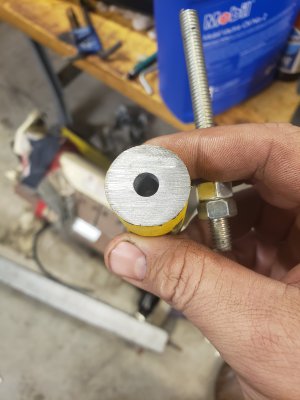- Joined
- Dec 20, 2012
- Messages
- 9,422
Late to the party but I had some thoughts.
- Without question, if the hole has to be sized precisely and have straight sides and a clean finish, the best way to do that is to bore it. It's not clear to me from your post but how big is the bore? If it is close to 0.200" ID then a 3/16" solid carbide bar with an insert with a small nose radius will do it, provided the bore is not more than about 1.875" - 2.00" deep. It is also possible that Micro 100 may have a solid carbide boring bar that will do it.
- If you have a good twist drill, you can follow it with a good reamer. A reamer can straighten a hole that is not out more than 0.005" so it's possible that a reamer might do it. If you try it and it works, the advantage is that you can make a lot of parts just like it faster than with any other method.
- Similar to a gun drill, D-bits, made from hardened and tempered drill rod, are known to drill straight, precise holes. I haven't tried them myself but I will when the need arises. These are what were used back in the old musket days and sounds like a very good solution. Plus, its cheap! Tons of info on D-bits on the net.



